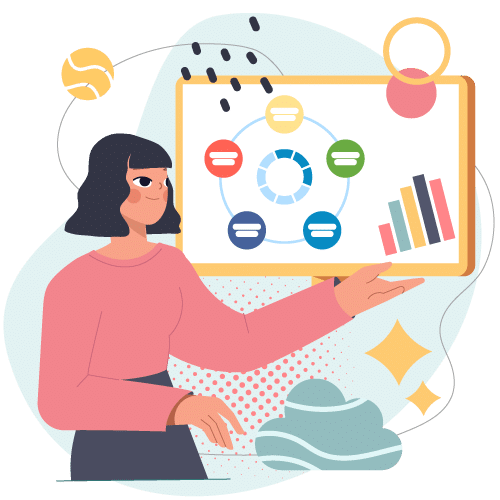Blog Post 3
What is Universal Design for Learning (UDL)?
Universal Design for Learning (UDL) is the use of a flexible and accessible education approach; allowing students to learn no matter what their preferred mode of teaching. The main principles of UDL are the multiple means of engagement, representation, action, and expression. UDL creates a more inclusive learning environment as it offers many ways for content to be learned. It also demonstrates a different way to present knowledge and unique ways to engage students. In a physical classroom, UDL can be applied by using different techniques for presenting projects. In high school, I had many classes where there were multiple different forms, and we could present learning outcomes. These would be by filming short videos, having short plays, writing papers, or having a slide show. These multiple forms of presenting were all linked to the same project but allowed for different creative outcomes. In an online classroom, UDL can be applied by using different online tools to submit work online. When I submit work online, I prefer to use my iPad and Apple pencil to write up my work. Other students can type or take pictures of their work and drop it into a file to be submitted. I like to use fun colours and drawings to engage myself in my work when writing on my iPad. I feel these multiple ways to submit work help each student to succeed in their unique way.

Ensuring Accessibility in Online Settings:
The success of accessible learning online is the allowing for all students can participate in the learning environment. Some elements that need to be in place to encourage accessibility are using user-friendly designs, accommodation to everyone’s unique needs, trail runs for content, and using accessible content. A specific way to encourage accessibility is to ask. Asking students and reaching out personally to specific students who may present with more needs. This allows for a conversation on how you can help a student with their input. Using polls or anonymous surveys is also beneficial to reach bigger groups without pressure. A personal way accessibility has played a role in my learning is by using polls and surveys to add input to Tas and the professor’s teachings. I have had the opportunity to partake in many forms of review after and during educational spaces. This allows for feedback on what students liked or didn’t like when learning in those specific classes.
Ethical Challenges of EdTech:
One potential ethical challenge of EdTech is the lack of universal digital tools. Some people don’t have access to proper online resources due to cost or limited due to internet connection. Some other challenges can be the added risk of breaching students’ privacy. As everything online is stored it could be shared unintentionally to anybody, this breaks privacy and can lead to unwanted information being spread. Educators can learn to store only what is necessary online and to keep all security to the highest quality. As well as promoting free platforms whenever possible and finding extra resources for students such as borrowing laptops or using library resources.
Ethical Considerations in Digital Interactions:
Some ethical considerations that arise in digital interactions are respect and privacy. It’s easy to feel safe being rude or unkind online as you can hide behind a screen. This brings importance to the necessary need to be kind and respectful online just as if you were face-to-face. Just because you are behind a screen doesn’t mean you can breach people’s trust and share unwanted information. Respecting people’s privacy is another key importance to digital interactions. Another important idea is to be aware of your digital footprint. As everything online can stay there and be reached by anyone it’s important to be cautious of your posts and interactions online. In this short video, students explain the importance of a digital footprint online.
Lastly, keeping academic integrity online is crucial. This means avoiding plagiarism and cheating as online resources make it easier to do so. It’s important to be honest about your work.
Applying UDL and Accessibility Principles:
In grade school, I had many opportunities to participate in all modes of learning no matter online or in person. I can remember teachers bringing in computer carts for when we needed to type up our work. This allows for students who may have not had internet or technology at home to participate in these projects. As well as teachers allowed for many forms of presenting to be performed for various projects. This allows students to express themselves in their preferred form to better engage themselves in learning. This was demonstrated by allowing students to write papers, make short films, write songs, or even present slide shows on their desired topic. This demonstrated UDL as it creates many different modes of learning for each unique student. The only improvement would be to allow this type of presentation for more projects. Some teachers were only lenient for one or two projects out of the year rather than the majority.
